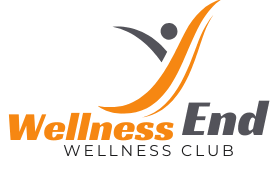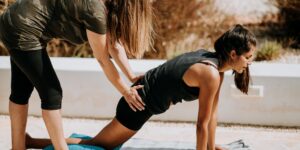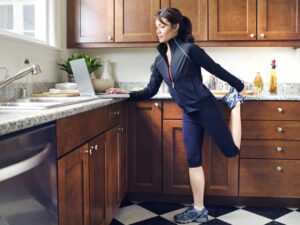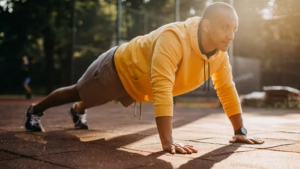Regular physical activity is essential for leading a happy, healthy, and fulfilling life. Whether you’re jogging in the park, dancing in your living room, or hitting the gym for a powerlifting session, fitness and movement play a huge role in improving your overall well-being. But with so many fitness options and advice out there, it can feel overwhelming to find what works best for you.
This guide will break it all down. You’ll learn why movement is so important, explore different types of fitness activities, and get actionable steps to build your own personalized fitness plan. Plus, we’ll tackle common challenges and share tips to keep you motivated along the way.
Let’s jump in and move toward a healthier you.
The Importance of Regular Fitness and Movement
Exercise is about so much more than looking good; it impacts every aspect of your life. A consistent fitness routine can:
- Boost mental health by reducing anxiety and depression.
- Improve sleep quality, focus, and productivity.
- Strengthen your muscles and bones to prevent age-related issues like osteoporosis.
- Decrease your risk of chronic diseases such as diabetes, heart disease, and high blood pressure.
According to the World Health Organization (WHO), adults should engage in at least 150-300 minutes of moderate aerobic activity or 75-150 minutes of vigorous aerobic activity weekly. Even better? Pair this with muscle-strengthening activities twice a week.
The bottom line? Movement is medicine, and everyone needs it.
Understanding Different Types of Fitness Activities
Fitness can be as diverse and unique as you are. Here’s a breakdown of the primary categories of fitness activities so you can explore what fits your interests and goals.
1. Cardiovascular Workouts
Cardio activities increase your heart rate and improve the efficiency of your cardiovascular system. Examples include:
- Running
- Cycling
- Swimming
- Jump rope workouts
These exercises burn calories and build endurance, making them a key part of overall fitness.
2. Strength Training
Building strength helps maintain strong muscles and bones while improving posture and metabolic rate. Consider options like:
- Lifting weights
- Bodyweight exercises (push-ups or squats)
- Kettlebell or resistance band workouts
3. Flexibility and Mobility
Maintaining flexibility reduces your risk of injury and improves joint mobility. Activities such as:
- Yoga and Pilates
- Stretching sessions
- Dynamic warm-ups for functional fitness
can help you move more freely throughout your day.
4. Fun, Functional Movement
Fitness doesn’t have to feel like a chore. Dancing, hiking, martial arts, or even rock climbing count as movement and are incredibly effective, especially when you’re having fun doing them!
The key is experimentation; try different activities until you find what brings you joy and keeps you engaged.
Creating a Personalized Fitness Plan
Personalization is the key to success in fitness. Here’s how to create a workout routine that works for you:
Step 1: Set your goals
Define what you want to achieve. Do you want to lose weight, build muscle, improve endurance, or boost flexibility? Clear goals will guide your plan.
Step 2: Assess your current fitness level
Be honest about your starting point! Consider factors like how much time you have, any preexisting conditions, or injuries.
Step 3: Choose activities you enjoy
Hate running? Skip it! Love dancing? Add it. When your workouts include activities you enjoy, you’ll stick with them longer.
Step 4: Create a balanced routine
Include a mix of cardio, strength training, and flexibility/mobility exercises. This ensures you’re building a well-rounded fitness foundation.
Step 5: Schedule your workouts
Plan your workouts just as you would any other appointment. Consistency is key, so make fitness a priority in your weekly schedule.
Step 6: Start small and progress
For beginners, start with 2–3 days a week and gradually increase frequency or intensity over time.
Overcoming Common Fitness Challenges
Staying consistent with fitness isn’t easy, and life can throw unexpected hurdles your way. Here’s how to tackle common challenges:
“I don’t have enough time.”
Break up workouts into smaller chunks. Even 10–15 minutes of movement adds up over the day.
“I don’t enjoy exercise.”
Find activities that don’t feel like exercise; dancing, team sports, or walking with friends can all be fun alternatives.
“I’m not seeing results.”
Give your body time to adapt! Focus on progress, consistency, and mastering technique instead of instant results.
“I lack motivation.”
Set small, achievable goals and reward yourself for reaching them. Having a workout buddy or personal trainer for accountability can also help.
Resources for Staying Motivated and Achieving Fitness Goals
The following tools and resources can enhance your fitness experience and keep you on track:
- Fitness Apps like MyFitnessPal or Nike Training Club for guided workouts and goal tracking.
- Online Communities & Forums like Reddit’s r/Fitness for sharing tips and experiences.
- YouTube Channels for free workout videos catering to all fitness levels.
- Classes at your local gym or community center to keep things fresh and interactive.
And most importantly, remember to check in with yourself regularly. Make adjustments to your plan as needed to keep your workouts fulfilling and effective.
Start Moving Toward a Better You
Fitness and movement aren’t just about changing your body; they’re about transforming your life. By exploring different activities, creating a personalized fitness plan, and tackling challenges, you can maintain an active lifestyle that empowers you to feel your best.
The most important step? Just start moving. Whether it’s a daily walk, trying your first yoga class, or lifting a set of dumbbells, every bit of movement matters.
Focus on enjoying the process rather than fixating on the outcome. Your healthier, more energized self is waiting for you.
FAQs
How many days a week should I exercise?
Aim for at least 3–5 days of movement per week, balancing intensity levels and recovery days to match your fitness level.
Can I build muscle with just bodyweight exercises?
Absolutely! Push-ups, planks, squats, and other bodyweight moves are great for muscle building, especially for beginners.
What’s the best time of day to work out?
Whatever time works best for you and fits into your routine! Consistency matters more than the time.




